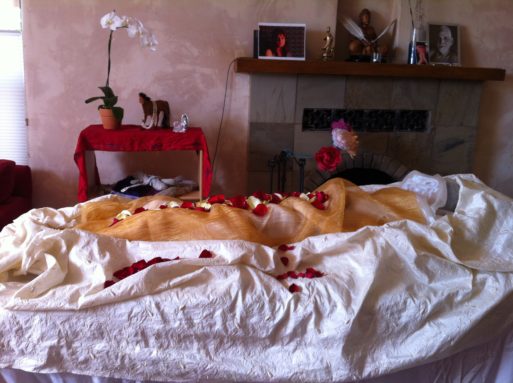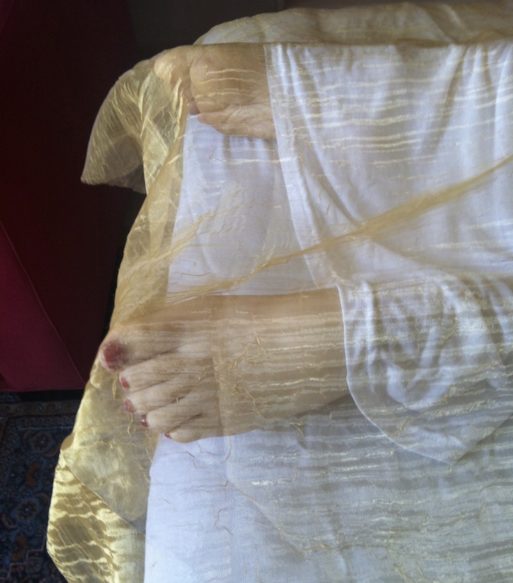
Lucia Maya and her daughter Elizabeth
(Credit: upworthy.com)
Lucia Maya cared for her daughter Elizabeth, diagnosed with non-Hodgkins lymphoma at the age of 21, when she returned to their family home to die.
Historically, children often died before their parents largely due to illness and accident. Yet it is still many parents’ worst nightmare to watch their child suffer. When doctors discovered Elizabeth’s tumors, her condition was already terminal. Thus, Lucia was left in the agonizing position of planning her daughter’s funeral while she was still alive. She opted for a home funeral because that just made sense to her. Her daughter lived and died at home, and she would be mourned at home surrounded by family and friends.

Elizabeth’s body laid out for a home funeral in the Maya’s family home
(Credit: upworthy.com)
Joanne Cacciatore, a research professor at Arizona State University who studies traumatic death, talks about Maya’s journey in an article on Upworthy. She notes that home funerals have a therapeutic dimension for those who are grieving the death of their loved one. With a home funeral, she says, “You can check in with that reality as often as you need… [Y]ou can sit in that room 24 hours a day for three or four days, and you can watch their body, and see that they’re not there.” Lucia reflects, “What was so lovely was that we knew there was no rush to call the funeral home to come pick up her body… We knew that we had time.”

Elizabeth’s toes reveal the loving care of her family
(Credit: upworthy.com)
When Elizabeth died, Lucia and her sister bathed and blessed her body with oils, and laid her out with silks and rose petals. They kept ice packs beneath her body to slow decomposition as mourners visited over the next few days. Family and friends placed love notes and farewell letters for Elizabeth in her cardboard coffin. Later, Lucia and her family used that same coffin to transport Elizabeth’s body to the crematorium when Lucia felt ready to let go of her daughter’s physical form.
Home funerals are an ancient practice. For centuries, they were simply how things were done in much of the world. Then came the Victorian era, when societies began to medicalize and professionalize death. These practices became further ingrained during World War I, when the volume of dead soldiers became too great for families to cope with on their own. In order to preserve bodies for their trip home for burial, the practice of embalming soon evolved.
The contemporary resurrection of home funerals in Western culture is, in this context, a return to traditional values and practices. The potential here is to reconnect individuals to place and each other by creating the time and space to navigate transition and change together.

 A Intimate Glance Into the Benefits of a Home Funeral
A Intimate Glance Into the Benefits of a Home Funeral




 Composting Bodies Is Now Legal in a Dozen States
Composting Bodies Is Now Legal in a Dozen States














